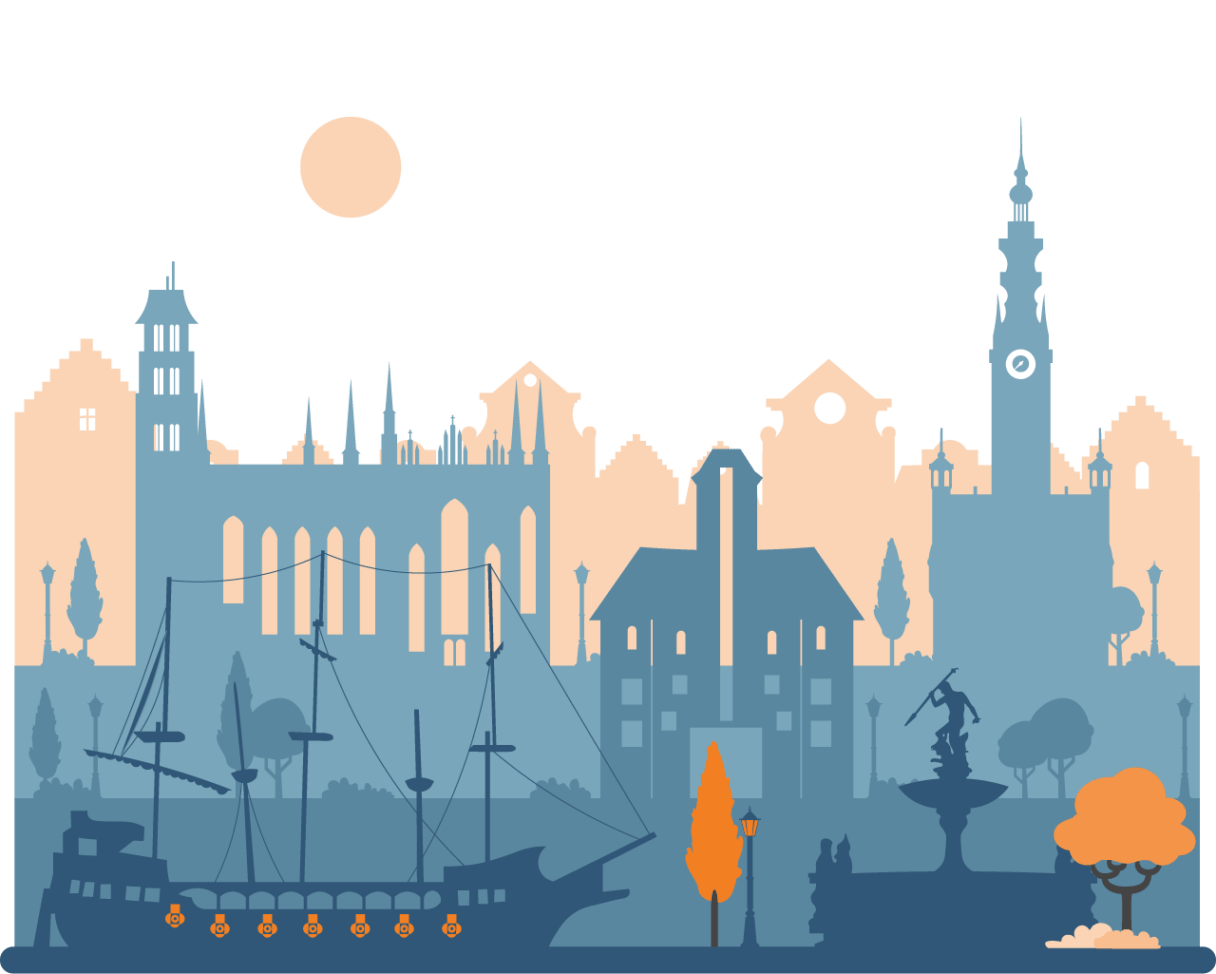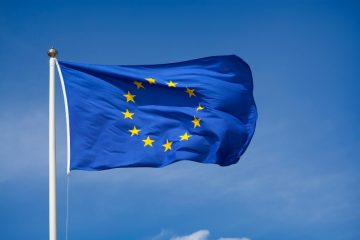
Erasmus Courses for Teachers in Gdańsk, Poland
Confirmed Sessions in Gdańsk
| Confirmed Course | Starting Date | Status | Enrolment | ||
|---|---|---|---|---|---|
| Study Circles in Education: Enhancing Learning T… | 7 Jul 2025 | 2025-07-07 | 0 | Register here » | |
| A Project Management System for a Better Quality… | 10 Nov 2025 | 2025-11-10 | 0 | Register here » |
What is included
More info
Please note that while these services apply to most courses, exceptions may occur. Even in locations where we have dedicated classrooms, we may occasionally need to rent external spaces nearby, and the availability of services may vary. Kids, pets, or guests within the school premises must be approved by email each time. Whether or not our premises are marked as wheelchair accessible, we kindly ask you to inform us in advance. If accessibility is an issue, we will arrange for an external classroom to accommodate your course. If you have any questions, please don't hesitate to reach out to us.
Our Cultural Activities
The following cultural activities are included in the price of each Erasmus course in Gdańsk:
A guided tour of Gdańsk
The tour is a guided walk through Gdańsk along the Royal Route, the city’s most representative street once used by Polish kings and visiting dignitaries. It begins at the Golden Gate, continues along Long Street, and ends at the Green Gate overlooking the Motława River. Along the way, visitors can admire the most important landmarks of the Main Town, such as the Main Town Hall, the Artus Court, and the Uphagen House. It is the heart of historic Gdańsk, full of cafés, restaurants, and colorful townhouses that have attracted tourists for centuries.
Duration: 2 hours
Starting time and day: To be confirmed
Meeting point: Brama Wyżynna (High Gate)
Gdańsk Tourist Card – Explorer Package (72h)
Free admission to major museums and landmarks:
- Museum of the Second World War
- European Solidarity Centre
- Gdańsk History Museum branches: Main Town Hall, Artus Court,
- Uphagen House, Amber Museum
- Hevelianum
- Archaeological Museum
- National Maritime Museum (selected exhibitions)
Special discounts on top attractions and services:
- City of Gdańsk Tourist Boat Cruises
- Escape rooms, spa & wellness, and recreational parks
- Restaurants, cafés, and selected shops
- Cathedral in Oliwa and other cultural spots
Our Academy in Gdańsk
We are located in:
Gdańsk’s course schedule
All our teacher training courses in Gdańsk will take place either in the morning (9.00-14.00) or in the afternoon (14.00-19.00), depending on classroom and trainer availability.
The final schedule will be sent two weeks before the course begins. We recommend planning any cultural activities only after receiving it.
How to reach us
The primary airport serving Gdańsk is Gdańsk Lech Wałęsa Airport (GDN) and it has direct flights from many European cities.
You can easily reach the city center from the airport by various means of transportation, including trains, buses, shuttle services, taxis, uber, and car rentals.
You can also reach Gdańsk from Sweden by ferry.
Once in Gdańsk, you’ll find an excellent public transport system, including trams, buses, and taxis to help you get around.
Public transport
The city of Gdansk is well connected thanks to an efficient network of buses and tramways.
If you want to travel by bike you can use the MEVO system: a lot of bikes are available around the Tricity that you can unlock thanks to the mobile app.
It is 0.15pln/min for standard bicycles and 0.30pln/min for bicycles with electric assistance.
If you want to travel around Tricity, the cheapest is to use SKM trains (the trains of the Tricity).
Our team in Gdańsk
Fiscal data
- Business name: Fundacja NOVA
- Main address: ul. Nadwiślańska 26 83-020 Błotnik, Poland
- Organisation ID: E10220113
- PIC: 898504017
- Responsible Person: Joanna Woźniczka-Sulka
- Email: teacheracademy@europassnetwork.eu
- Phone: +39 055 1997 3220
Erasmus Courses in Gdańsk
Featured Courses in Gdańsk
All courses in Gdańsk
Yoga and Meditation for Educators: Be a Great Teacher, Be Your Best Self
Stress Relief and Well-being Strategies for Teachers
Mastering Erasmus+ KA1 and KA2 Project Writing
A Project Management System for a Better Quality of Teaching
Learning Through Collaboration and Cooperation
Mastering Project, Task, Problem, and Competency-Based Learning
ABC of Computers
Build Your School Website
Community Learning Centers: Study Visits in Gdańsk
Eldcare: Building Empathy and Inclusion for Aging Populations
Explaining the European Union and Its Opportunities to Your Students
Modern Skills for Third-Sector Workers: From Creativity to Technology
Best Things to Do in Gdańsk
 Gdańsk is a captivating city on Poland’s Baltic coast dating back over 1000 troubled years.
Gdańsk is a captivating city on Poland’s Baltic coast dating back over 1000 troubled years.
As a major port and trading hub, Gdańsk has a unique blend of Gothic, Renaissance, and Baroque styles, beautifully showcased in its meticulously restored Old Town.
Gdańsk is also historically significant as the birthplace of the Solidarity movement, which played a crucial role in the fall of communism in Europe.
Visitors can enjoy a stroll along the scenic waterfront, marvel at landmarks like St. Mary’s Church, and delve into the city’s fascinating past at its many museums.
With its lively atmosphere, beautiful architecture, and deep historical roots, Gdańsk is a city that promises an unforgettable experience.
1. Old Town and Long Market (Długi Targ)

Start your Gdańsk adventure in the heart of the Old Town, where the Long Market awaits with its colorful merchant houses, intricate facades, and the iconic Neptune Fountain, symbolizing the city’s connection to the sea.
The Artus Court, a former meeting place for merchants, now houses the Gdańsk History Museum, offering insights into the city’s rich past. This area is perfect for a leisurely stroll, with plenty of cafes and shops to explore.
2. St. Mary’s Church (Bazylika Mariacka)
With its soaring Gothic architecture from the 13th century, this church is a must-see in Gdańsk. For a breathtaking view of Gdańsk, climb the 400 steps to the top of the church tower, where you’ll be rewarded with panoramic vistas of the city and beyond.
3. Motława River and the Gdańsk Crane

The Motława River waterfront is a lively area perfect for a scenic walk. The medieval crane (Zuraw), a symbol of the city’s trading past, dominates the skyline.
This historic port crane, dating back to the 15th century, once played a crucial role in loading cargo onto ships. Today, it houses part of the National Maritime Museum, where you can learn more about the city’s maritime heritage.
4. European Solidarity Centre
This modern museum is a powerful tribute to the Solidarity movement, which began in Gdańsk’s shipyards and played a pivotal role in the fall of communism in Eastern Europe.
The European Solidarity Centre offers a deeply moving and interactive experience, with exhibits that tell the story of the struggle for freedom and democracy. The museum is housed in an architecturally striking building, symbolizing the city’s resilience and spirit.
5. The Oliwa Park and Oliwa Cathedral

Oliwa Park is a tranquil oasis in the city, perfect for a relaxing afternoon. The park features beautifully landscaped gardens, fountains, and winding paths.
At the heart of the park is the Oliwa Cathedral, famous for its stunning Baroque organ and one of the largest in Europe. The organ’s intricate design and powerful sound make it a highlight of any visit, especially during one of the regular organ concerts held here.
6. The Gdańsk Shipyard
Visit the historic shipyard where the Solidarity movement was born under the leadership of Lech Wałęsa. A guided tour of the shipyard provides a fascinating glimpse into Gdańsk’s industrial past and its role in shaping modern history. There you can also listen to live music and try some street food, exploring the alternative side of the city.
7. Malbork Castle
Just a short train ride from Gdańsk, Malbork Castle is a UNESCO World Heritage Site and the largest brick castle in the world by land area. Built by the Teutonic Knights in the 13th century, the castle complex is a masterpiece of medieval architecture.
Visiting here offers a journey back in time, with grand halls, chapels, and impressive fortifications to explore. The castle also houses a museum with exhibits on medieval life, weaponry, and the history of the Teutonic Order.
8. Sopot Beach and Pier

A quick trip from Gdańsk brings you to the seaside resort of Sopot, known for its long, sandy beaches and vibrant atmosphere. The highlight of Sopot is its historic wooden pier, the longest in Europe, stretching out into the Baltic Sea.
The pier is a great spot for a stroll, offering beautiful views of the coast and the charming resort town. Sopot also has a lively promenade with cafes, restaurants, and shops, making it a perfect destination for a day of relaxation.
9. Museum of the Second World War
This museum offers an in-depth look at the global impact of World War II, with a special focus on the war’s effects on Poland.
The museum’s exhibits are immersive and thought-provoking, using multimedia, artifacts, and personal testimonies to tell the story of the war from multiple perspectives.
 Please wait, we're loading the information about the courses. It could take few seconds.
Please wait, we're loading the information about the courses. It could take few seconds.














